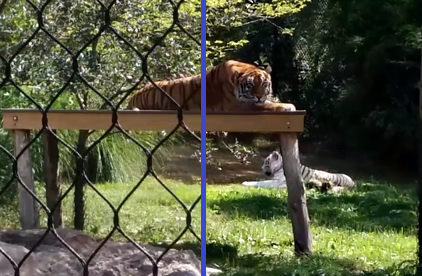A Computational Approach for Obstruction-Free Photography. A Computational Approach for Obstruction-Free Photography. Tianfan Xue1∗. Michael Rubinstein2†. Ce Liu2†. William T. Freeman1,2. 1MIT CSAIL. 2Google Research. (
Learning to See Through Obstructions

Google and MIT can take reflection-free photos through windows
Learning to See Through Obstructions. A Computational Approach for Obstruction-Free Photography, SIGGRAPH, 2015. • A deep learning approach for single image reflection removal, ECCV, 2018., Google and MIT can take reflection-free photos through windows, Google and MIT can take reflection-free photos through windows
A computational approach for obstruction-free photography | ACM

Google And MIT Demonstrate Reflection Removal Technology From Images
A computational approach for obstruction-free photography | ACM. We present a unified computational approach for taking photos through reflecting or occluding elements such as windows and fences. Rather than capturing a , Google And MIT Demonstrate Reflection Removal Technology From Images, Google And MIT Demonstrate Reflection Removal Technology From Images
Tianfan Xue - Google Scholar
*GitHub - davlia-projects/Obstruction-Free-Photography: Computer *
Tianfan Xue - Google Scholar. Computer Vision–ECCV 2016: 14th European Conference, Amsterdam, The …, 2016. 372, 2016. A computational approach for obstruction-free photography. T Xue, M , GitHub - davlia-projects/Obstruction-Free-Photography: Computer , GitHub - davlia-projects/Obstruction-Free-Photography: Computer
Michael Rubinstein - Google Scholar
A Computational Approach for Obstruction-Free Photography
Michael Rubinstein - Google Scholar. Computer vision - image/video processing - computational photography A computational approach for obstruction-free photography. T Xue, M , A Computational Approach for Obstruction-Free Photography, A Computational Approach for Obstruction-Free Photography
Alice Draghici (@draghici_alice) / X

MIT Archives - Less is More
Alice Draghici (@draghici_alice) / X. A Computational Approach for Obstruction-Free Photography The video accompanying our SIGGRAPH 2015 paper " A Computational Approach for Obstruction-Free , MIT Archives - Less is More, MIT Archives - Less is More
Obstruction-Free Photography
![PDF] A computational approach for obstruction-free photography ](https://ai2-s2-public.s3.amazonaws.com/figures/2017-08-08/5f26cc5088cacaad7f7f40a3bf09319f67c47e99/4-Figure2-1.png)
*PDF] A computational approach for obstruction-free photography *
Obstruction-Free Photography. We present a unified computational approach for taking photos through reflecting or occluding elements such as windows and fences., PDF] A computational approach for obstruction-free photography , PDF] A computational approach for obstruction-free photography
Tianfan Xue - Google 学术搜索

Tianfan Xue
Tianfan Xue - Google 学术搜索. A computational approach for obstruction-free photography T Xue, M Rubinstein, C Liu, WT Freeman ACM Transactions on Graphics (TOG) 34 (4), 1-11, 2015, Tianfan Xue, Tianfan Xue
A Computational Approach for Obstruction-Free Photography

*Google & MIT’s New Algorithm Uses Edge Detection To Remove *
A Computational Approach for Obstruction-Free Photography. A Computational Approach for Obstruction-Free Photography. Tianfan Xue1∗. Michael Rubinstein2†. Ce Liu2†. William T. Freeman1,2. 1MIT CSAIL. 2Google Research. ( , Google & MIT’s New Algorithm Uses Edge Detection To Remove , Google & MIT’s New Algorithm Uses Edge Detection To Remove , a-computational-approach-for- , Google and MIT have created an algorithm that brings amazing , Demonstrating We run the Lucas-Kanade algorithm on the set of pixels that make up the edges. For each pixel, the Lucas-Kanade method assumes that the